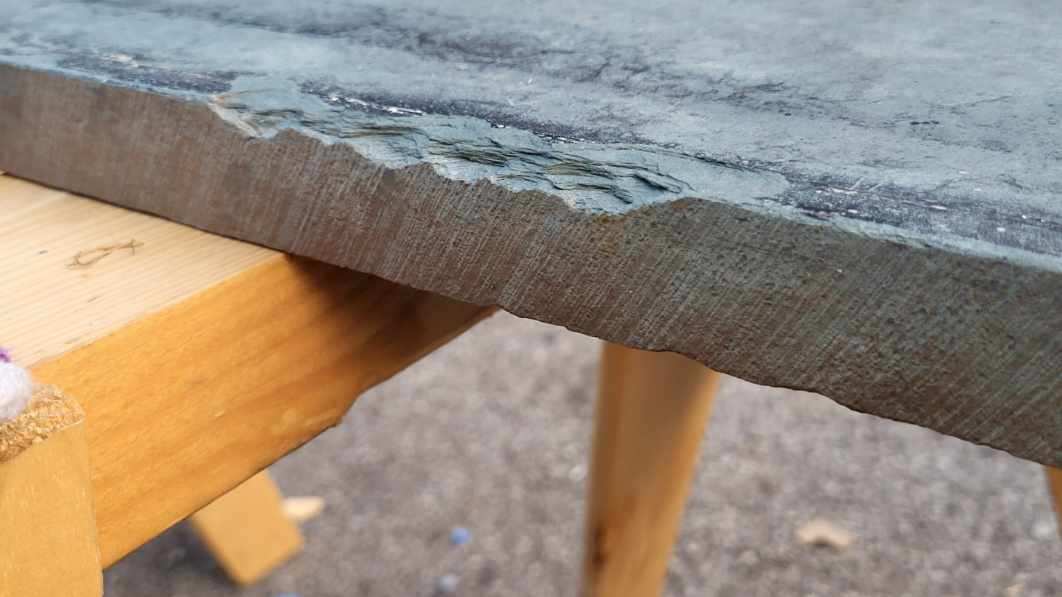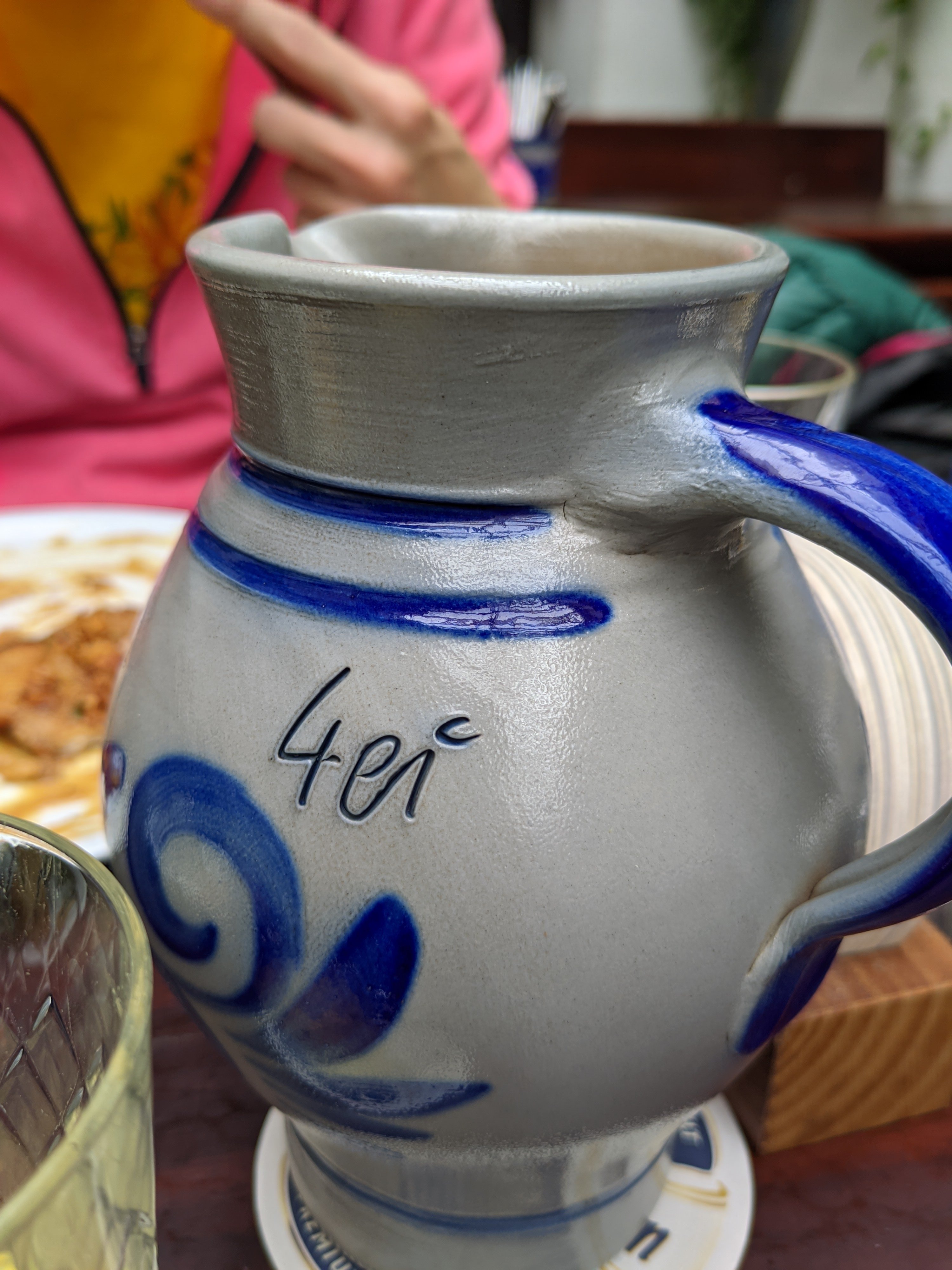So, I found this stone mantel behind the garage of the 100 year old house we just bought. It was mostly buried in the dirt. Fits our mantel perfect. Some sort of green stone. Was painted black at some point. I’m trying to strip the paint and want to refinish the stone. Area is southeast of Pittsburgh. Father of the man who built the house was an Italian stonemason that immigrated.
Don’t think it’s slate, has a tight grain and rings when you knock on it.
What kind of stone is this?


I’m no geologist but I’d have said slate.
So, I looked it up and the description of Phyllite seems on point. Geology is super interesting!
Even more searching showed shale which also looks like a good candidate. Thanks for posting this. I have been curious about geology lately and this caused me to look this up.
It may be slate, now that I read more about it. Don’t have any experience with slate, shale, or phyllite. Not sure.
Definitely not shale. Slate is metamorphized shale. You’d never make a mantel out of shale, too flaky.
That’s slate. Very sure. It’s a common building material (especially roofing) where it can look and act like that.
Shale is similar. I have a lot of shale deposits nearby, and I can say that stripping paint with a paintbrush would likely break little bits off of it. It’s way to fragile to do anything with it. It would be exceedingly difficult to cut it to that shape and keep it that way, as well.
Looking into it more, I agree that it’s slate. Didn’t realize it could be this size, only ever heard of it being used for tiles.
Expensive pool tables are often a solid sheet of slate, since its quite smooth and flat.
Learned that when I was recruited to help put the top in place on one.
Now that it is solved can we discuss the truck? What perspective fuckery is going on?
IDK, my son took the pictures for me. His phone has a better camera than mine. 98 Ranger XLT. It’s my fourth vehicle, lifetime. Throws no codes, I keep it running tight.
Lemmy isn’t letting me upload a better pic of it right now.
Yeah, I was pretty sure it was a Ranger, but the cab looks stretched upwards
Cool truck. Yeah a short lens like on a phone is good for selfies but adds a fisheye effect further than a few feet.
I did not realize that. I’m not really a camera guy, so thanks for clearing that up for me!
And the wheelbase is shorter. OPs kid probably used the fisheye lens.
“It was in the pool”
Looks like the kei truck the US could have made!
I’m like 90% sure it’s shale, but that’d be a very unique choice for a mantle because of how easily it chips. I hope you find out what it is.
Shale is not a good building material, it’s too friable (crumbly). Slate starts off as the same rock ans shale except it undergoes a bunch of heat and pressure which makes it much less friable and an excellent material for things like roofing tiles and mantles.
Could you like squish shale in an oven to make it more like slate? Even if it’s not economical, just interested in the science of it.
A lot of heat and a lot of pressure would be a start, but then there’s a time factor as well. The heat and pressure mess around with the rocks mineral constituents, but the real “magic” begins as those minerals start recrystallizing. In time (geologic time) that recrystallization makes a much harder rock.
I honestly don’t know if the process can be sped up. I’m thinking of something like firing bricks, but bricks are made with specific ingredients and certain impurities are specifically excluded because they hurt the manufacturing. When you start with shale, lord knows what mother nature threw into that specific specimen and how she arranged it.
I guess the easiest way to get shale harder might be to crush it finely, mix it with water and bake it. If you’re lucky the clay minerals will find each other and form a strong matrix. It wouldn’t be slate, or even a rock anymore, but bricks are handy sometimes.
Not sure, but maybe soapstone? It’s often been used around fireplaces because of heat resistance








